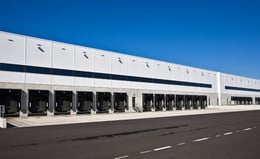Preparing for “What If” Scenarios Across the Supply Chain
Nancy Sarpolis - September 13, 2022

Just when supply chain managers were getting a handle on logistics slowdowns, labor shortages and the rising cost of raw materials, a new crop of challenges threaten to derail their plans: Skyrocketing energy costs, record heat that forces factories to close or reduce hours and droughts that slow shipping channels to a trickle.
While it may be impossible to predict the next big disruption, agile technologies that enable “what if” scenario planning across the supply chain can make it easier to weather this ongoing volatility.
“Many supply chain managers are currently troubled by a lack of visibility throughout their extended supply chains,” according to KPMG. “Leading organizations are using advanced technologies to significantly improve visibility and thereby become far more responsive to major disruption and variability within their domestic, regional and global supply chains.”
Industry 4.0 solutions that test a variety of scenarios to optimize the planning, scheduling, and monitoring of the whole supply chain—from distribution to production to transportation—are becoming must-haves in the supply chain management toolkit.
How Scenario Planning Can Help
Rather than simply reacting to changes and struggling to recover, what-if scenario planning helps companies identify specific sets of uncertainties and make predictions about how they may impact business. Expecting an influx of orders based on seasonality of a product? Are weather disruptions impacting a key supplier? Will a change in industry regulations require adjustments to manufacturing processes, such as labeling or packaging?
What-if analyses allow planners to change parameters and create different rule models and simulated scenarios. The effects of a change on production or distribution are calculated immediately and are made transparent, allowing the planner to determine the best course of action for each potential scenario to guarantee minimized damage and maximized success.
Scenario Planning Across the Supply Chain
The production planning process usually begins once the sales team provides their forecasts and supply requests. The production plan is then created, allowing companies to map out how much of a product they need to make, how much raw material it will require and how the product will be produced—right down to the individual machines in the assembly line. Visibility into production plans helps the logistics team to minimize transportation expenses by taking advantage of excess carrier capacity where possible.
Scenario planning technologies with the ability to integrate sales, production and transportation forecasts can be a significant enabler of supply chain optimization. Unexpected maintenance on an assembly line, for example, can be modeled in the scenario planning tool for the best option to ensure sales orders are re-routed to other lines—all while meeting on-time customer commitments with the most cost-effective delivery options available.
Solutions that run different simulations, compare the results and then allow the data to be transferred to the operative system make implementation of the preferred scenario immediate and seamless.
Using the Cloud for Better Visibility
Cloud-based solutions that offer parallel access capabilities ensure that the scenarios can be accessed by multiple users from different departments and organizations. This will enable better collaboration within the technology, ensuring that data can be shared and viewed with ease. Likewise, solutions with the ability to integrate with Microsoft Azure, AWS or popular suppliers of cloud services and can result in faster, simpler, and scalable implementation across the organization.
The bottom line: Even though supply chain managers can’t predict the next big disruption, state-of-the-art scenario planning technologies that integrate S&OP, production and transportation planning into a single, holistic process can be the answer for increasing visibility and optimizing scheduling during very uncertain times.
If you want to learn more get your Guide to Production Planning
In this Guide you will learn:
-
How to build resilience
-
How to increase efficiency
-
How to use integrated APS planning services for production planning
-
What must-have features of an APS solution you need
-
Which KPI’s you can expect
LATEST POSTS
- Understand Circular Economy in The Manufacturing Industry
- How Can Industry 4.0 IT Integration Be Achieved Smoothly?
- The Significance of Order Sequencing in Discrete Manufacturing
- How to improve your Supply Chain Management: The Power of Control Towers
- Optimizing Human Resource Scheduling in Manufacturing: A Technological Approach



